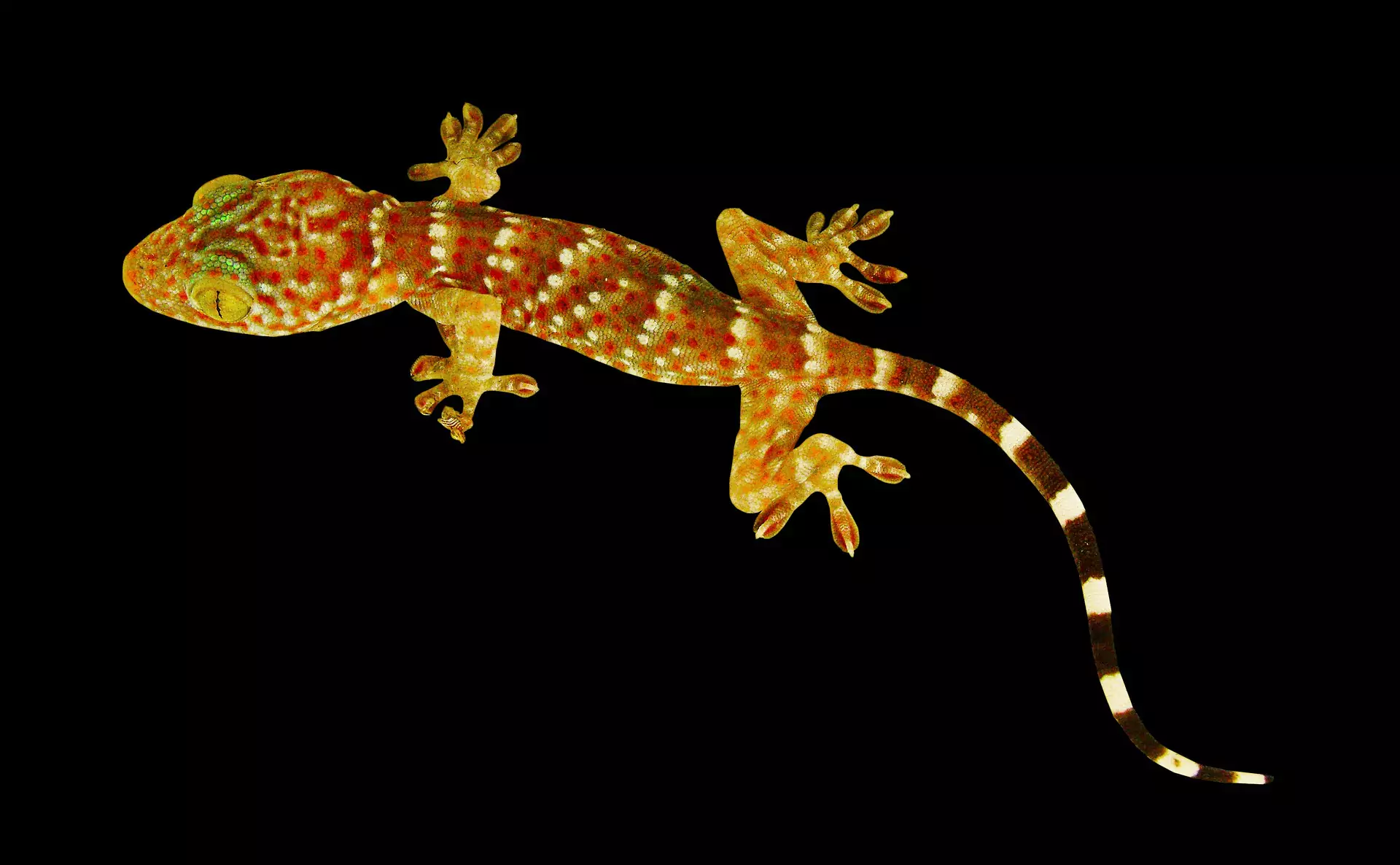Are you considering adopting a gecko? While there are many different kinds of geckos, the most popular type is the leopard gecko, a very cute and friendly lizard that is fairly easy to keep. Like any other reptile, these guys do need proper habitats to thrive. In fact, creating a proper environment is half the battle as far as care goes! A Bowmanville, ON vet offers some tips on this below.
Choosing Your Gecko’s Habitat
There are a few things to keep in mind when choosing the cage. Size is the biggest factor.
For adult geckos, you would want a habitat that is at least 20 gallons. Juveniles can have smaller tanks. We would suggest getting at least ten gallons for a young lizard. Of course, these are estimates for a single gecko. If you’re going to have more than one, you’ll need a larger cage.
It’s best to get a habitat with glass sides.You may see habitats with open tops. These can be quite attractive, but they aren’t going to be right for every household. If you have other pets and/or children, you’ll want to get something with a screened lid. While leopard geckos aren’t able to climb, as some other lizards can, this will protect them from outside dangers … such as your cat.
As far as shape goes, Choose a tank that offers more horizontal than vertical space for a leopard gecko. Make sure the cover closes tightly, especially if you have cats.
(A note on this: geckos do vary in size. We’re focusing on the leopard gecko in this article, so if you are getting a different type, you’ll want to do some research on the specific type of lizard you want. For instance, if you’re getting an arboreal gecko, such as a crested or tokay gecko, choose something tall enough to allow them some climbing room, so you can put small trees in there for them.)
Leopard Gecko Habitat Lighting
Most reptiles require UVB lighting to thrive. Some reptiles can develop MBD (metabolic bone disease), a painful and sometimes fatal condition, if they don’t get enough UVB. That isn’t the case with leopard geckos. In fact, this is one area where leopard geckos are a bit different than other reptiles. These guys are crepuscular. That means they are most active at dusk and dawn, and spend most of the daytime hours sleeping. Some studies do show that geckos will benefit from getting some UVB light, but they don’t require as much as many other reptiles do. It also isn’t as critical to them. That said, they do need proper lighting. For a leopard gecko, you can get a simple 12 watt bulb. You’ll want to put this on a timer, so it will imitate national light cycles.
Choosing Substrate For Your Gecko
Choosing the right substrate is also very important. These are generally broken into two categories. Solid substrates would include things like reptile carpet, butcher paper, paper towels, or newsprint, while loose substrates include substrate products, such as quartz sand, excavator clay, and desert soils.
There are pros and cons to each type. Solid substrates are easier to keep clean. They also don’t weigh as much, and usually cost less. However, they don’t give your pet a chance to dig, and may not offer much traction. They can also be uncomfortable. Just like people, reptiles may get sore from standing on a hard surface! Loose substrates do allow for digging, and may be easier to keep clean. However, they cost more, and also weigh more. There’s also a larger risk of impaction, parasitic load, and dehydration, particularly if conditions and other care needs are not up to par.
We wouldn’t suggest using sand, especially on juvenile geckos. They may accidentally ingest it. This can cause intestinal blockages, which are both very painful and very dangerous. You can, however, use a mix of sand and soil.
Ask your vet for more information on substrate.
What Temperatures Do Geckos Need?
The areas leopard geckos naturally inhabit are quite a bit cooler than the tropical and subtropical regions many reptiles hail from. Unlike many of their cousins, leopard geckos don’t enjoy those blistering hot temperatures. However, it is important to keep the cage within a specific range. Generally, this should be about 23.89 to 26.67 C on the cool side, and 27 to 29 on the warm side. You can drop the temps a bit at night. You’ll also need to offer a basking spot. This should be hotter: about 32 to 35 C. Under tank heaters or heating pads are a good bet. Don’t use heating rocks: geckos often get burned on them.
Ask your Mississauga, ON vet for specific advice on this, including tips on getting heating equipment.
What Sort Of Hides Do Geckos Need?
Everyone needs a place to go and unwind and get away from things. That is true for reptiles as well! You’ll need to provide a sort of hide. Geckos often hide in cracks and crevasses in the wild, so they have a strong instinct to want to retreat. Your pet’s cage should offer something that imitates this.
You can find great hides in pet stores, but you can also get a bit creative and use a plant pot, a plastic container with a ‘door’ cut into it, or something similar.
You’ll need to get two. One should be on the end with the heat lamp, while the other can be on the opposite side. One of these will need to be set up in a way that will help your lizard shed. You can do that by adding wet paper towels, moss, or other substances.
What Do Geckos Need For Accessories?
Geckos don’t exactly play, so you won’t need to add any toys. They do, however, need dinnerware. That would include things like a small water bowl, and a small dish for calcium powder.
Making A Fun Environment For Geckos
Like any other pets, geckos need stimulation and enrichment. For reptiles, this basically entails climbing and exploring things. You can add safe plants, climbing rocks, logs, and other accessories. Small statues or even pieces of art can also add a fun touch. These things can also make the habitat look attractive and interesting!
What Else Should I Consider When Getting A Gecko?
There are more than 1500 kinds of geckos. Only a few of these make good pets, though. Though the leopard gecko is at the top of the list, there are other options, such as the Crested gecko, and African Fat-Tailed gecko. If you opt for a different type, you’ll want to look up specific care instructions.
Before purchasing a leopard gecko, or any other reptile, do plenty of research. You’ll want to consider things like size, habitat needs, temperament, lifespan, and difficulty of care. Diet is also a big one. Most of these guys eat living insects, such as crickets, Dubai roaches, and waxworms. This of course means you’ll need to be comfortable with purchasing, storing, and handling the bugs.
Make An Appointment At Our Mississauga, ON Animal Clinic
Are you looking for a great reptile vet in the area? Contact us, your Mississauga, ON pet hospital today. We are dedicated to offering great care!



